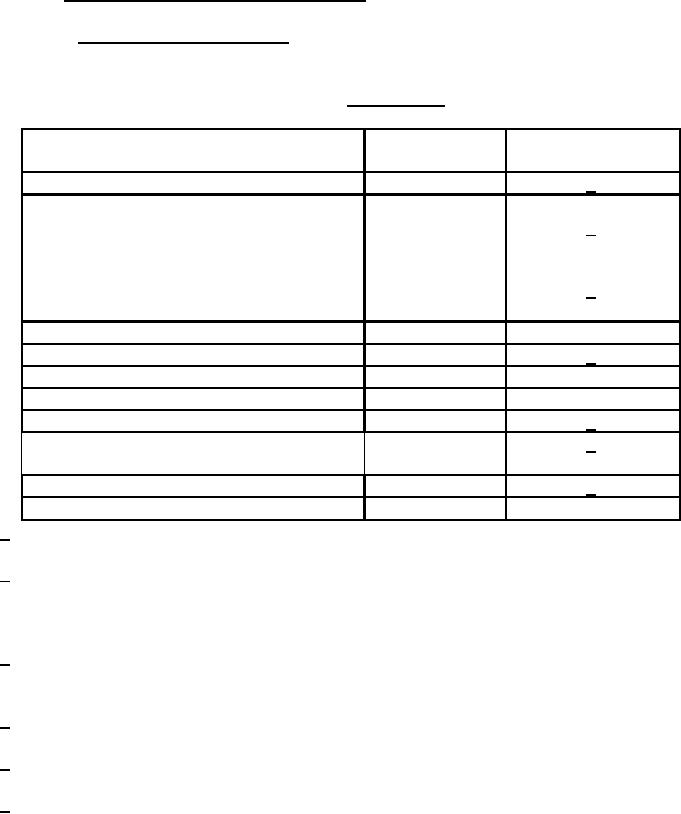
MIL-PRF-22191F
4.6 Verification of performance requirements.
4.6.1 MIL-STD-3010 test methods. Unless otherwise specified, the tests in table VI shall
be conducted in accordance with the identified methods of MIL-STD-3010.
TABLE VI. Test methods.
MIL-STD-3010
Special Requirement
Tests
Test Method No.
or Exception Note
Seam strength
2024
1/
Water vapor transmission rate (type I only)
3030
2/
After room temperature flexing
2017
As received
After Aging
3/
After low temperature flexing (type I only)
As received
Thickness
1003
Puncture resistance
2065
4/
Blocking resistance
3003
Resistance to curl
2015
Contact corrosivity
3005
5/
Oil resistance (delamination) (multi-ply
3015
6/
materials only)
Water resistance of marking
3027
7/
Transparency
4034
---
1/ Any evidence of ply delamination in the heat-sealed area shall be cause for rejection. The
evaluation shall be limited to the heat-sealed area.
2/ Full stroke shall be used for testing all type I materials.
3/ Conduct tests as specified in MIL-STD-3010, Method 2017 except that only `as received'
specimens shall be tested. Prior to flexing, test specimens shall be conditioned for at least 30
minutes at -20 + 2 °F and the flexing operation shall be conducted at -20 + 2 °F.
4/ Test shall be run on 5 specimens with the heat sealable face in contact with the probe and 5
specimens with the non-heat-sealable face contacting the probe. The average value of each set
of specimens shall meet the requirement specified in table I.
5/ If corrosion is evident in the blank area, the test shall be repeated with a new test panel.
Corrosion in the intermediate area shall not invalidate the test nor be cause for rejection.
6/ Oil conforming to ASTM oil IRM-903, as specified in ASTM-D471, and a di-2-ethylhexyl
sebacate synthetic oil shall both be used.
7/ Three specimens shall be tested, each one containing a complete set of markings.
10
For Parts Inquires call Parts Hangar, Inc (727) 493-0744
© Copyright 2015 Integrated Publishing, Inc.
A Service Disabled Veteran Owned Small Business